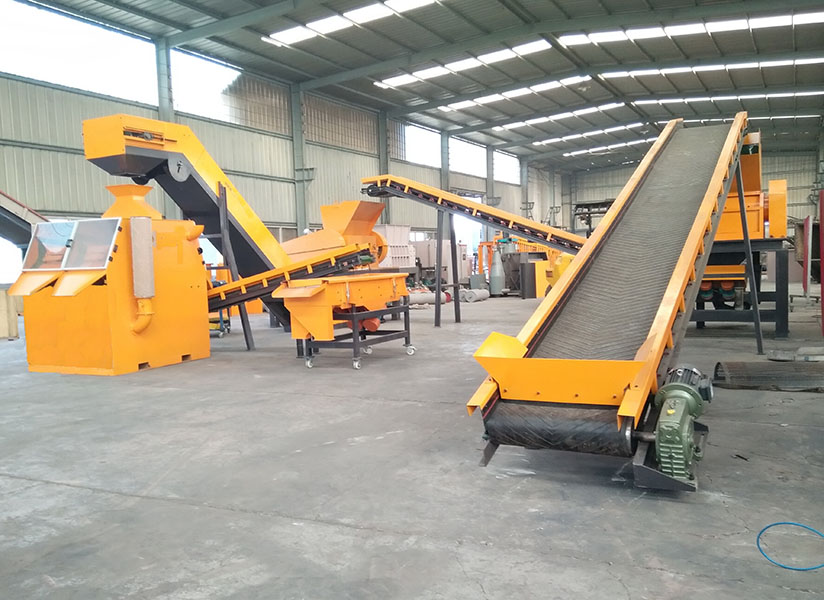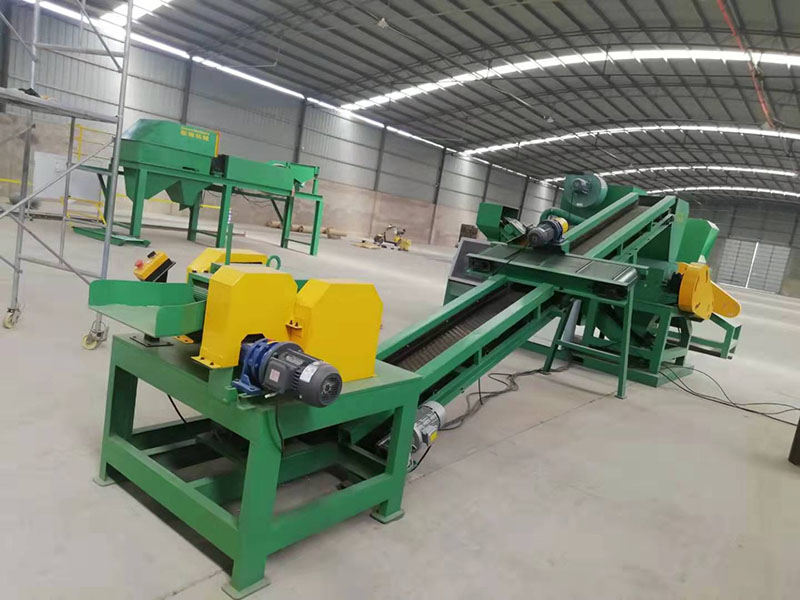
Oct . 16, 2025 14:55 Back to list
If you spend enough time around scrap yards and e-waste plants, you notice patterns. Lately, the buzz is around the Copper wire granulator—a dry-separation workhorse that turns mixed cables into high-value copper granules with ≈99.9% purity. Origin stories matter too: this model’s built in Dafu Village, Qingyuan Town, Qingyuan District, Baoding City, Hebei Province, which has quietly become a cluster for robust recycling machinery.

Two forces are converging: higher copper prices and stricter disposal rules for WEEE and automotive harnesses. Plants want dry processes (low water, low permits), tight dust control, and verifiable purity. A Copper wire granulator hits that trifecta: compact footprint, repeatable separation, and clean output buyers trust.
Typical flow: feed cables → primary shredder → granulator → air/vibration separator → optional electrostatic stage → dust filtration → copper and plastic collection. Supported inputs include car looms, communication cables, and mixed household wire, usually 0.02–40 mm diameter. In practice, very hair-thin lacquered wires need a bit of finesse, but it’s doable.
Purity verification: buyers often ask for quick tests. Plants use portable XRF for indicative screening, periodic ICP-OES lab checks, and density/visual sampling. For conductor quality references, many QC teams lean on IEC/ASTM guidance [1][2].

| Parameter | Typical value (≈/range) |
|---|---|
| Input wire diameter | 0.02–40 mm |
| Capacity | 200–800 kg/h (real-world use may vary) |
| Copper purity | Up to 99.9% with proper tuning |
| Separation | Air + vibrating table; optional electrostatic |
| Installed power | 18–60 kW (by model) |
| Noise | ≤80–85 dB(A) at 1 m with enclosure [5] |
| Dust control | Cyclone + filter bags; HEPA optional |
| Service life | Main frame 6–10+ years; blades 600–1,200 h per edge |
| Certifications | Typically CE, ISO 9001—confirm per batch [4] |

Most common buys: scrap aggregators upgrading from hand-stripping, mid-size WEEE plants, and auto dismantlers cleaning harnesses pre-sale.

| Vendor | Origin | Capacity band | Certs (typical) | Warranty | Notes |
|---|---|---|---|---|---|
| OW Recycling | Baoding, Hebei | 200–800 kg/h | CE, ISO 9001 (verify) | 12–18 months (varies) | Good price-to-performance; strong spares support. |
| EU Supplier A | Western Europe | 150–600 kg/h | CE, ATEX options | 24 months | Premium pricing; fast on-site service. |
| Domestic Maker B | South China | 100–500 kg/h | CE (some lines) | 12 months | Budget-friendly; check dust controls carefully. |
Options I’ve seen work: 380/400/480 V motor sets, sound enclosures, electrostatic add-on for ultra-thin varnished wire, and oversized cyclones for fines capture. Acceptance tests usually include 200–500 kg trial runs, sieve analysis of copper/plastic, and noise/dust checks to workplace standards [5].

Many customers say the biggest surprise is consistency—once airflow, screens, and feed rate are dialed in, shifts run predictably. That’s gold in recycling, figuratively speaking.
If your stream includes 0.02–40 mm cables and you need dry, auditable results, a Copper wire granulator is hard to argue against. Just insist on a witnessed test, documented purity data, and spare blade kits from day one.
Latest news
Double Shaft Shredder Price Explained: Global Trends, Benefits & Vendor Comparisons
NewsNov.24,2025
Expert Insights into Double Shaft Shredder Factory: Boosting Global Recycling Efficiency
NewsNov.23,2025
Leading Double Shaft Shredder Suppliers for Industrial Recycling and Waste Management
NewsNov.23,2025
Leading Double Shaft Shredder Manufacturers | Durable & Sustainable Industrial Shredders
NewsNov.23,2025
Understanding Double Shaft Shredder Machine Price: Buyers’ Guide & Global Insights
NewsNov.22,2025
The Essential Guide to Double Shaft Shredders: Benefits, Applications & Trends
NewsNov.22,2025